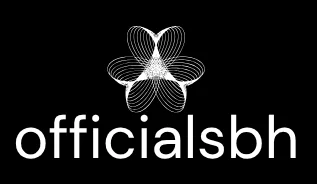In a world where pajamas are the new business casual and coffee runs are just a click away, remote collaboration software has become the unsung hero of modern teamwork. Gone are the days of endless email chains and awkward conference calls that feel more like a game of “Can you hear me now?” With the right tools, teams can connect, create, and conquer from the comfort of their own homes—or even while lounging on a beach in Bali.
Imagine brainstorming ideas with colleagues as if they were right there in the room, minus the awkward small talk about the weather. Remote collaboration software makes it possible to share files, chat in real-time, and manage projects seamlessly. It’s time to embrace the future of work, where productivity thrives and the only thing standing between you and success is your Wi-Fi connection.
Table of Contents
ToggleOverview Of Remote Collaboration Software
Remote collaboration software delivers essential functionalities that enhance teamwork across various locations. Teams utilize tools for real-time communication, which streamlines discussions and reduces delays that often occur with emails. Integration of various features such as file sharing and project management plays a crucial role in optimizing workflows.
Project management tools allow members to assign tasks, set deadlines, and track progress collectively. File-sharing capabilities ensure that all participants access the most current documents, reducing miscommunication. Moreover, video conferencing features offer face-to-face interaction, fostering a stronger team dynamic despite physical distances.
Cloud-based systems provide flexibility, enabling access from multiple devices, whether working from home or during travel. This adaptability supports a more agile approach to project execution. Many of these software solutions include user-friendly interfaces, making it easier for both tech-savvy individuals and those less familiar with technology to engage effectively.
Robust security measures protect sensitive information, a critical consideration for businesses managing confidential data. High-quality remote collaboration software also prioritizes scalability, accommodating organizations of varying sizes, from small startups to large enterprises. The right solution not only enhances productivity but also supports a healthy work-life balance for team members.
Collectively, these elements illustrate how remote collaboration software has transformed the modern workplace. Adopting these tools can lead to improved communication and greater overall efficiency.
Key Features To Look For

Identifying essential features enhances the effectiveness of remote collaboration software. Various aspects contribute to seamless teamwork and communication.
Real-Time Communication Tools
Real-time communication tools facilitate instant discussions. Chat functionalities engage team members in ongoing conversations. These systems reduce reliance on slow email exchanges. Video calling options enable visual interactions, bridging distances effectively. A variety of integrations with other platforms improve workflow by linking communications directly to projects. Enhanced notification settings keep users informed and involved in their tasks.
File Sharing Capabilities
File sharing capabilities play a crucial role in remote collaboration. Secure access to shared documents ensures team members work with the latest versions. Cloud storage simplifies retrieval and storage, making information accessible from anywhere. Versions tracking helps users monitor changes and maintain clarity. Various permission settings allow control over who can edit or view documents, enhancing security and collaboration.
Project Management Integration
Project management integration streamlines task allocation and progress monitoring. Users can assign tasks to team members quickly and set clear deadlines. This integration fosters accountability by tracking individual contributions transparently. Visual tools like Gantt charts or Kanban boards present project stages in clear formats. Automated reminders promote timely actions, ensuring that projects stay on schedule and within scope.
Popular Remote Collaboration Software
Remote collaboration software enhances teamwork and productivity. Below are some leading options in this domain.
Software A: Features and Benefits
Slack operates as a powerful messaging platform that facilitates real-time communication. Users can engage in one-on-one chats, public channels, or private groups, ensuring organized conversations. It integrates seamlessly with project management tools, boosts collaboration through file sharing, and allows for integration with over a thousand other applications. With customizable notifications, teams will stay updated without feeling overwhelmed.
Software B: Features and Benefits
Microsoft Teams combines chat, video conferencing, and file sharing into one comprehensive platform. Team members can conduct virtual meetings and collaborate on documents in real-time, enhancing productivity. Its integration with Microsoft 365 provides access to familiar tools like Word and Excel, making task management straightforward. Security features safeguard sensitive data, ensuring organizational compliance.
Software C: Features and Benefits
Trello excels in project management with its visual board system. Users can create cards representing tasks, assign them to team members, and track progress through lists. Task deadlines and automated reminders keep projects on track, significantly enhancing accountability. Trello’s flexibility allows users to customize boards according to specific project needs, streamlining workflows effectively.
Best Practices For Effective Remote Collaboration
Effective remote collaboration relies on well-defined strategies that enhance teamwork and productivity. Following best practices helps teams navigate challenges common in virtual environments.
Establishing Clear Communication
Establishing clear communication is crucial for remote teams. Team members must use precise language to avoid misunderstandings. Regular check-ins encourage open dialogue and provide opportunities to address concerns. Utilizing multiple channels, such as chat and video calls, allows for flexibility in communication styles. Sharing updates consistently fosters transparency and keeps everyone informed. Employing a centralized platform can streamline discussions, ensuring important messages aren’t lost in long threads. Reinforcing a culture of feedback encourages continuous improvement among team members.
Utilizing Tasks and Deadlines
Utilizing tasks and deadlines significantly enhances project management. Clearly defining tasks enables team members to understand responsibilities without ambiguity. Setting deadlines creates a sense of urgency and keeps projects on track. Visual project boards allow for easy tracking of progress and outstanding tasks. Breaking larger projects into smaller, manageable tasks prevents overwhelm and promotes steady progress. Assigning individual accountability provides clarity on ownership. Regularly reviewing progress during team meetings ensures deadlines remain in focus, allowing for timely adjustments as needed.
Remote collaboration software is reshaping the landscape of teamwork. By facilitating real-time communication and streamlined project management, these tools empower teams to stay connected and productive regardless of location. The integration of features like file sharing and video conferencing enhances collaboration while robust security measures ensure data protection.
As organizations continue to embrace remote work, investing in the right collaboration software becomes essential. The flexibility and user-friendly interfaces of these tools cater to diverse teams, making it easier to adapt to changing work environments. Ultimately, leveraging remote collaboration software not only boosts efficiency but also fosters a healthy work-life balance for team members, making it a valuable asset in today’s digital age.



